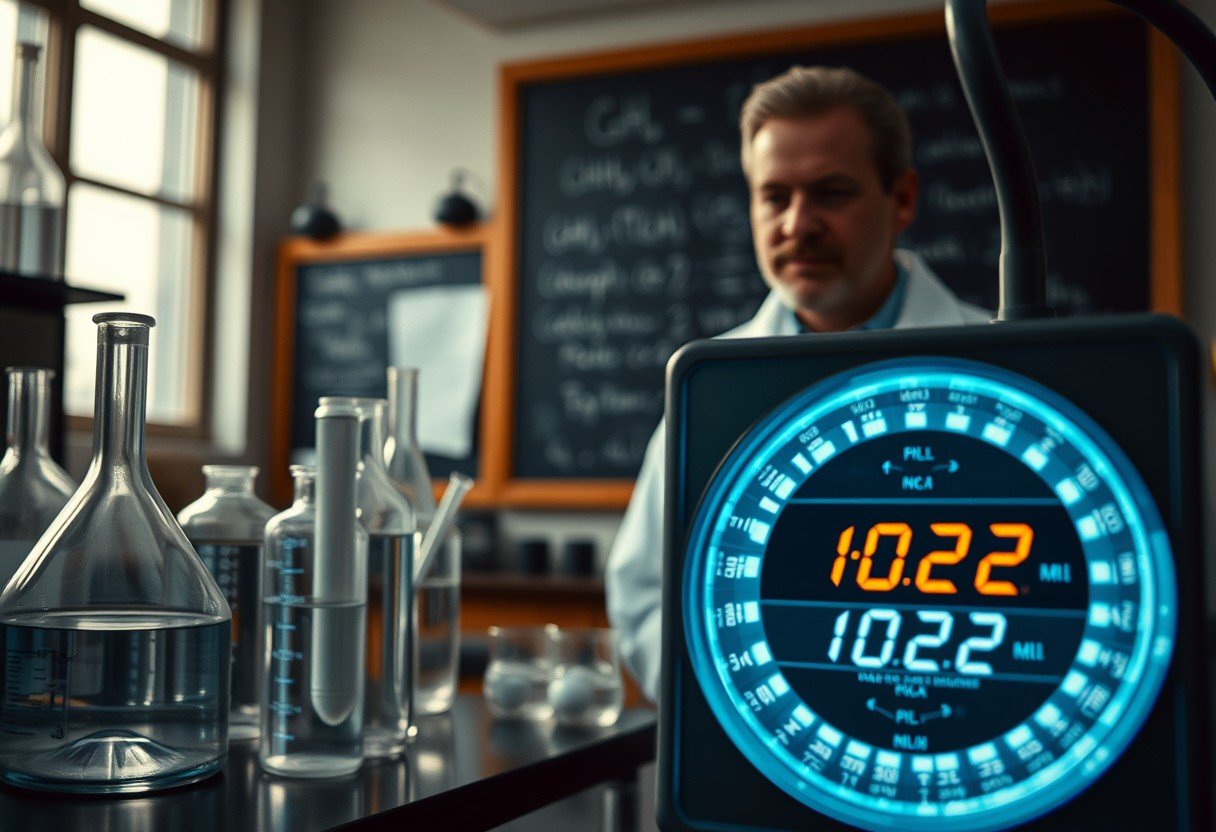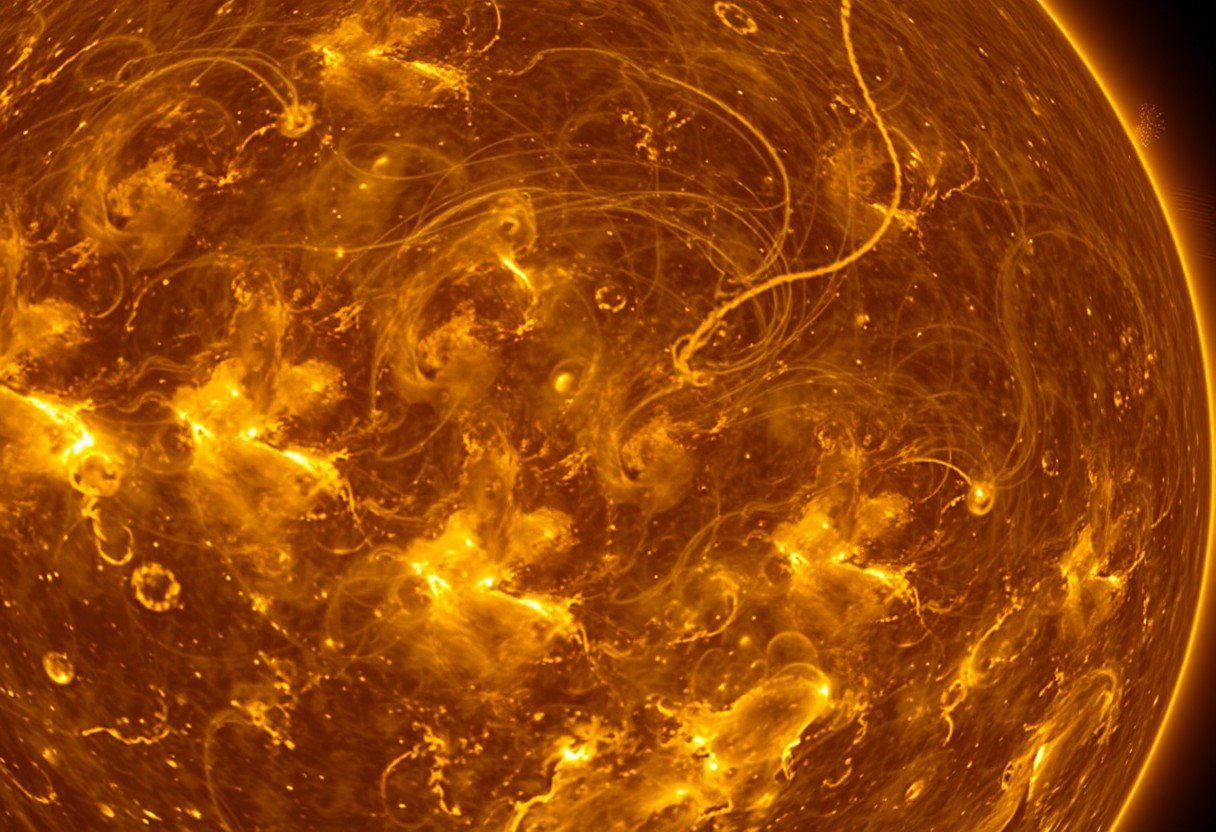Just as you research into the world of chemical equilibrium, understanding the impact of temperature on reaction quotient (Q) and equilibrium constant (K) becomes crucial. When temperature rises, it influences both Q and K in specific ways that can affect your interpretations of dynamic systems. This blog post will explore what these changes reveal about your reactions and why they are vital for predicting the direction of chemical processes in various scenarios.
Key Takeaways:
- Equilibrium Shift: An increase in temperature typically favors the endothermic reaction, which can result in a shift in equilibrium and alter the concentrations of reactants and products.
- Effect on K: The equilibrium constant (K) is temperature-dependent; as temperature rises, K may increase or decrease based on whether the reaction is endothermic or exothermic.
- Q vs. K: The reaction quotient (Q) reflects the current state of the system, and immediately after a temperature change, Q may not equal K until the system re-establishes equilibrium.
- Temperature and Reaction Dynamics: Changes in temperature can affect reaction rates, potentially speeding up or slowing down the attainment of equilibrium.
- Implications for Predictions: Understanding how temperature influences Q and K is crucial for predicting the direction of shifts in chemical systems when conditions change.

Understanding Q (Heat Transfer)
The concept of Q refers to the amount of heat energy transferred from one body or system to another due to a temperature difference. In thermodynamics, understanding Q is vital for analyzing energy exchanges in various processes, such as heating, cooling, or phase transitions. Grasping the significance of Q enables you to predict how systems will respond when exposed to changes in thermal conditions.
Definition of Q
Transfer of heat, denoted as Q, occurs when there is a temperature gradient between substances. This energy transfer can take place through conduction, convection, or radiation, allowing for the relocation of thermal energy from warmer areas to cooler ones. Understanding this definition is crucial for analyzing thermal processes in your applications.
Factors Influencing Q
Influencing the heat transfer Q involves several factors that determine the efficiency and rate at which heat energy is exchanged. These factors include temperature difference, material properties, surface area, and the presence of any barriers. Evaluating these variables can enhance your understanding of heat transfer mechanisms. Recognizing these influences is vital to optimizing thermal management in your systems.
A deeper explore the factors influencing Q reveals that the temperature difference drives the direction and magnitude of heat transfer. Material properties such as thermal conductivity and specific heat capacity also play significant roles in determining how quickly energy is transferred. Furthermore, the surface area exposed to heat exchange strongly affects the rate at which Q occurs. Different barriers, such as insulation materials, can either enhance or inhibit heat transfer efficiency. Recognizing these factors allows you to tailor solutions suited to specific heat transfer challenges in your processes.
Understanding K (Equilibrium Constant)
You need to grasp the concept of the equilibrium constant, K, which is vital for predicting the direction of chemical reactions. K indicates the ratio of the concentrations of products to reactants at equilibrium, allowing you to understand whether a reaction favors products or reactants when temperature changes occur.
Definition of K
With K defined as the equilibrium constant, it mathematically represents the concentrations of the products raised to the power of their respective coefficients, divided by the concentrations of the reactants raised to their coefficients. This ratio remains constant at a specific temperature, providing you a powerful tool for analyzing reaction dynamics.
Temperature Dependence of K
An important aspect to consider is the temperature dependence of K. K values are not fixed; they change with temperature due to the endothermic or exothermic nature of the reaction involved. This variability is crucial for predicting how changes in temperature affect the position of equilibrium in your chemical reactions.
Temperature Dependence of K
| Reaction Type | Effect of Temperature |
|---|---|
| Endothermic | Increases with rise in temperature |
| Exothermic | Decreases with rise in temperature |
Definition: The temperature dependence of K can be explained by Le Chatelier’s Principle, which states that a system at equilibrium will adjust to counteract changes. For endothermic reactions, increasing temperature shifts the equilibrium towards products, increasing K. Conversely, for exothermic reactions, raising the temperature shifts the equilibrium towards reactants, decreasing K. Understanding this allows you to better predict changes in reaction dynamics with temperature variations.
Temperature Dependence of K
| Factor Affecting K | Explanation |
|---|---|
| Endothermic Reactions | Shift equilibrium right; K increases |
| Exothermic Reactions | Shift equilibrium left; K decreases |
Relationship Between Temperature and Q
All thermodynamic processes are influenced by temperature, which directly affects the heat transfer (Q) in a system. When the temperature of a substance increases, the kinetic energy of its particles rises, leading to a change in heat transfer dynamics. The following table summarizes the relationship:
| Temperature Increase | Increase in Q |
| Temperature Decrease | Decrease in Q |
Effect of Temperature on Heat Transfer
On a fundamental level, heat transfer is significantly impacted by temperature variations. Higher temperatures can enhance the rate of heat conduction, convection, and radiation. The following table illustrates how temperature impacts different heat transfer types:
| Conduction | Increases with temperature differential |
| Convection | Enhances with higher fluid temperatures |
| Radiation | Proportional to the fourth power of absolute temperature |
Practical Implications of Q Changes
Transfer of heat (Q) in practical applications is crucial in various fields such as engineering, cooking, and meteorology. Understanding how heat transfer varies with temperature helps you optimize processes and energy usage. For example, increasing temperature can result in more efficient thermal management systems in buildings and appliances.
Another key aspect to consider is the safety implications surrounding Q changes, particularly in industrial settings. Elevated heat transfer can lead to increased risks of equipment failure or accidents. Therefore, monitoring and managing temperature within systems are imperative to ensure optimal performance and safety, as you strive to implement effective thermal strategies.
Relationship Between Temperature and K
After an increase in temperature, the relationship between temperature and the equilibrium constant (K) can be understood through Le Chatelier’s principle. This principle states that if a system at equilibrium experiences a change in temperature, the equilibrium will shift to counteract that change. Consequently, K may increase or decrease depending on the reaction’s nature—endothermic or exothermic—which affects how the system reacts to temperature fluctuations.
| Type of Reaction | Effect on K |
| Endothermic | K increases with temperature |
| Exothermic | K decreases with temperature |
How Temperature Affects K Values
Affects equilibrium constants (K) directly as temperature increases; K values for reactions shift based on whether the reaction absorbs or releases heat. Endothermic reactions increase K, while exothermic reactions see a decrease in K values. This is crucial for predicting how the system will respond to temperature changes.
| Temperature Increase | Impact on K |
| Endothermic Reactants | Increased K Value |
| Exothermic Reactants | Decreased K Value |
Shift in Equilibrium due to Temperature Changes
Changes in temperature lead to a shift in the position of equilibrium. By applying Le Chatelier’s principle, you can predict the direction of this shift. An increase in temperature will drive an endothermic reaction forward, while it will shift an exothermic reaction backward, altering the concentrations of reactants and products.
| Temperature Change | Equilibrium Shift |
| Increase | Right (for endothermic) |
| Increase | Left (for exothermic) |
To better understand how temperature changes affect equilibrium, you can analyze the specific components involved in the reaction. For instance, in an exothermic reaction where heat is a product, an increase in temperature will push the reaction towards the reactants, reducing the concentration of products. Conversely, in an endothermic reaction, increasing temperature will enhance the products’ formation. Recognizing these shifts allows you to anticipate how your system will behave under varying thermal conditions.
| Specific Conditions | Equilibrium Impact |
| Exothermic Reaction | Equilibrium shifts left |
| Endothermic Reaction | Equilibrium shifts right |
Experimental Observations
Many factors can influence the behavior of equilibrium constants (K) and reaction quotient (Q) upon temperature increases. Observations in controlled experiments show that heat can shift equilibria, either driving reactions forward or backward depending on whether they are exothermic or endothermic. This alteration is vital for understanding how and why chemical systems adapt under thermal stress.
Laboratory Techniques to Measure Changes
With the advancement of laboratory techniques, you can accurately measure changes in Q and K during temperature fluctuations. Methods such as spectrophotometry, calorimetry, and gas chromatography provide real-time insights into the reaction dynamics, allowing for a comprehensive understanding of equilibrium shifts.
Examples of Temperature Increases Impacting Q and K
On an analytical level, various classical reactions demonstrate the impact of temperature on Q and K. For example, the decomposition of ammonium chloride and the formation of nitrogen oxides both illustrate how elevated temperatures can favor product formation or reactant stability. You can better predict chemical behavior in response to heat by observing these changes.
Examples of Temperature Increases Impacting Q and K
| Reaction | Effect of Temperature Increase |
| Decomposition of Ammonium Chloride | Forward reaction favored, increasing products. |
| Synthesis of Nitrogen Oxides | Increased temperature leads to higher yield of NOx. |
The understanding of how temperature affects reaction direction is crucial for both academic and practical applications. By studying specific reactions, you can determine trends that apply to various chemical systems. This knowledge equips you with the tools needed to manipulate conditions for desired outcomes effectively.
Further Examples of Temperature Increases Impacting Q and K
| Reaction | Change in Q and K with Temperature |
| Endothermic Reactions | K increases with temperature; favoring products. |
| Exothermic Reactions | K decreases with temperature; favoring reactants. |
Applications in Chemical Equilibrium
For those studying chemical systems, understanding the effects of temperature on reaction quotients (Q) and equilibrium constants (K) is crucial. When the temperature rises, you’ll find that the position of equilibrium can shift, affecting both Q and K values. Familiarizing yourself with Le Chatelier’s principle can help you predict how changes in temperature will influence your chemical reactions, allowing for more precise control over industrial processes and scientific experiments.
Industrial Implications
For industries that rely on chemical reactions, managing temperature is necessary for optimizing yield and efficiency. When temperature increases, the equilibrium may shift toward products or reactants depending on the reaction’s enthalpy. Being able to predict these shifts will enable you to adjust your processes accordingly, leading to enhanced production rates and reduced costs.
Environmental Considerations
Chemical processes often have environmental impacts that can be exacerbated by temperature fluctuations. You must consider how shifts in Q and K in response to temperature can lead to increased emissions or resource depletion.
Environmental factors are critical when controlling chemical processes, as changes in temperature can initiate unwanted side reactions or alter product compositions, resulting in hazardous waste or increased carbon footprint. By adopting sustainable practices and maintaining awareness of how temperature affects your chemical equilibria, you can minimize the ecological impact of your operations and contribute to more sustainable industrial practices.
Conclusion
From above, you can conclude that an increase in temperature significantly affects the position of equilibrium in a system involving reactants Q and K. As the temperature rises, if the reaction is endothermic, you will find that the value of K increases due to the higher energy requirements for the forward reaction. Conversely, for exothermic reactions, K will decrease. Therefore, understanding the relationship between temperature changes and equilibrium constants is crucial for predicting how your system will behave under varying thermal conditions.
FAQ
Q: What happens to the equilibrium constant (K) after an increase in temperature for an exothermic reaction?
A: For an exothermic reaction, an increase in temperature typically results in the equilibrium constant (K) decreasing. This occurs because, according to Le Chatelier’s principle, adding heat to an exothermic reaction shifts the equilibrium position to favor the reactants, meaning that the concentrations of products will decrease relative to reactants, thus lowering K.
Q: How does temperature affect the reaction quotient (Q) after an increase in temperature?
A: The reaction quotient (Q) will not change immediately after an increase in temperature because it is dependent only on the current concentrations of the reactants and products. However, the changes in concentration ratios following temperature increase will determine how Q compares to the new equilibrium constant (K) at the elevated temperature.
Q: What is the relationship between Q and K immediately after a temperature increase?
A: Immediately after a temperature increase, Q remains unchanged while the value of K will have altered depending on whether the reaction is endothermic or exothermic. After the increase in temperature, the system will take time to reach a new equilibrium state, during which Q may be compared to K to determine the direction in which the reaction will shift to achieve equilibrium.
Q: Can the direction of the reaction shift after a temperature increase be predicted immediately?
A: While Q itself will remain constant right after the temperature increase, the shift of the reaction in response to the new K value can be predicted. For an exothermic reaction, if K decreases, the reaction will shift toward the reactants to re-establish equilibrium, whereas for an endothermic reaction, K will increase, prompting a shift toward the products.
Q: Why is it important to understand the effect of temperature on Q and K in chemical reactions?
A: Understanding the impact of temperature on Q and K is crucial for predicting the behavior of chemical systems in both industrial and laboratory settings. It enables chemists to manipulate conditions to favor product formation or reactant recovery, enhancing the efficiency of reactions and guiding optimal process designs in chemical engineering and synthesis.








Leave a Comment